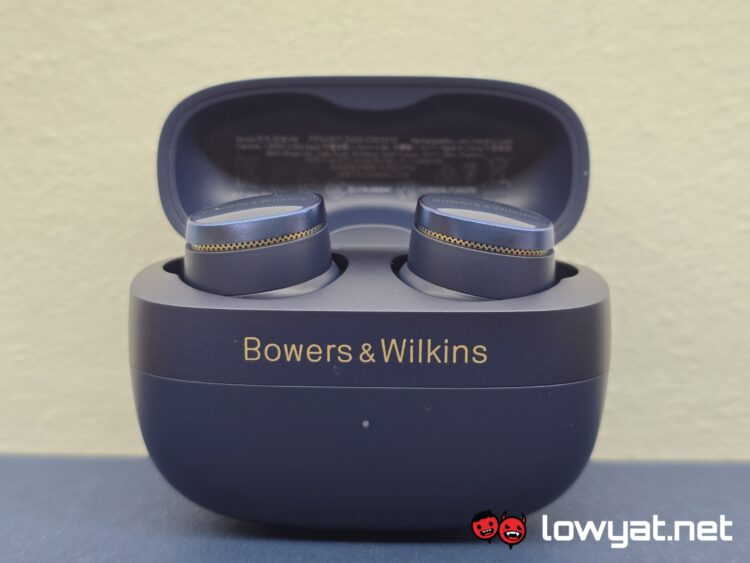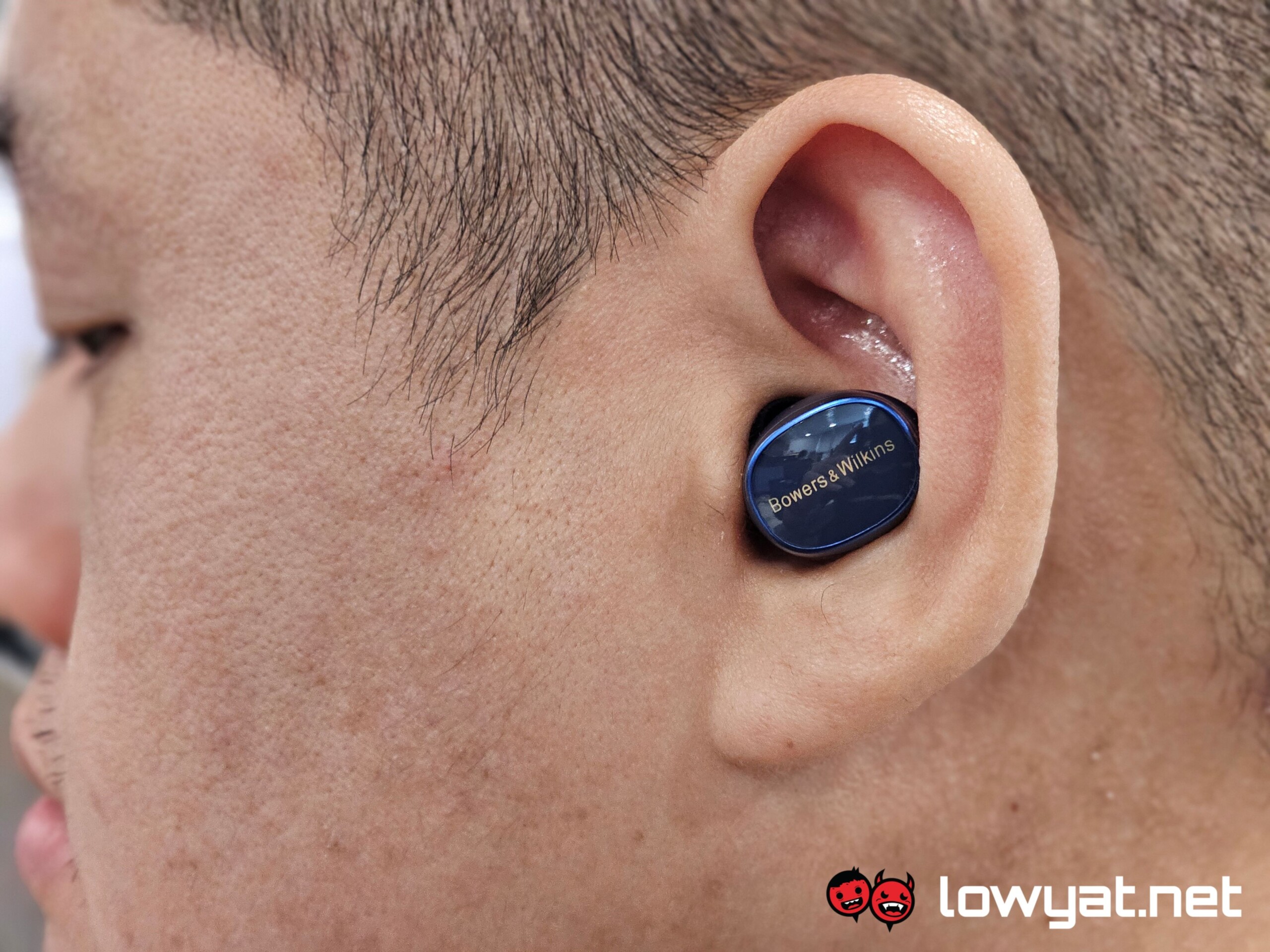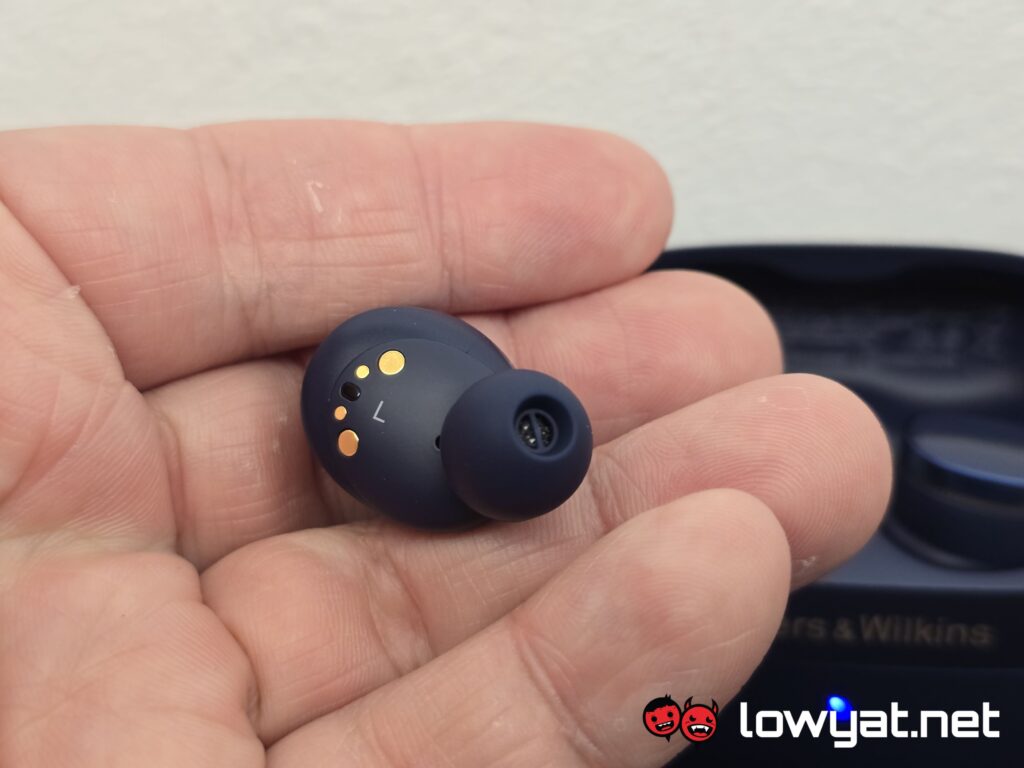The Bowers & Wilkins (B&W) Pi8 officially landed in Malaysia a couple of months ago. I’ve had some time with the earbuds as my daily driver, and I’m at a bit of a loss for words with them.
While they are indubitably one of the more expensive pair of earbuds I’ve ever had the pleasure of sticking into my ear canals, they are a couple of niggling issues I have with them.
What Am I Looking At?
So, B&W’s Pi8 aren’t your average TWS earbuds. Off the shelf, these earbuds retail at RM2,399, which is clearly on the higher end of the “premium” description.
At that price, though, B&W is going all out to impress. The entire package of the Pi8 comes with a very solidly built charging cradle, a couple of cables for charging and transforming it into a receiver, and of course, the accompanying pair of earbuds.
While the design of the charging cradle is simple, the same cannot be said about the earbuds. Unlike the Pi7 S2, the earbuds of Pi8 has more curves and junk in its proverbial trunk. B&W spent alot of time reworking them from its predecessor, in order to fit the new 12mm carbon cones responsible for driving sound into the lugholes.
The result is a pair of square-shaped earbuds as a whole, with silicon eartips that come different sizes. While the default eartips attached to them are medium, I switched them out for the largest pair that it comes with. Also, the increase in size translate to bigger touch capacitive sensors, which can be customised via the dedicated B&W app, albeit in limited fashion.
What’s Good About It?
Unlike the Pi7 S2, B&W actually provided an equaliser for the Pi8, in the form of a graphics style equaliser. Many of you may not use this and leave but for me, I appreciate having the ability to tweak my audio accordingly. Another boon is that these earbuds are loud. I capped my volume at 50% because anything higher than that and I feared I would develop some form of tinnitus.
As for its performance, the Pi8 immediately presents a a slight imbalance, interestingly enough, by erring towards both the highs and lows. Listening to Who Needs Friends by Royal Blood, it really brings out the high hats and deep beats that makes up the entirety of the song.
The level clarity in these earbuds feel very wide, open, and full.
For more modern and industrial metal tracks like Kill the Messenger by The Carthesian Duelists, the earbuds doles out a very open and precise delivery for each element in the track. For another matter, the sound staging really is wonderful, and listening to Luigi Boccherini’s La Musica Notturna Della Strada De Madrid – particularly the version featured in the score of Master and Commander – impresses me with how I can hear each pluck and drawing of the strings from each violin and bass violin.
For jazz, the lows heard in Feeling Good by Nina Simones rattle the back of my skull, as does the deep box percussions of Digging my Potato by Yoko Kanno and the Seatbelts.
One feature that has been carried forward from the Pi7 S2 is the retransmission function, allowing the earbuds to transform into your headphones aboard a plane with the provided 3.5mm-to-USB-C cable, or to your PC and laptop with a standard USB-C cable.
What’s The Catch?
There is a weird quirk with the earbuds of the Pi8. If you take out and insert the earbuds one and a time, they have some trouble adjusting the Sound Pressure Level (SPL) accordingly. Fixing this requires you take out both earbuds and reinsert them into your ears, at which point, they both adjust themselves.
On another note, the ANC on the Pi8 isn’t the best I’ve experienced. When activated, the noise in my immediate surroundings still leaks in; it’s good enough while commuting or walking about but honestly, it does little to block out more piercing noises, such as the white noise on an airplane in flight. That said, passthrough mode is solid, allowing me to hear everything clearly and precisely.
Remember when I said the functions customisation of the touch sensors are limited? Unlike current earbuds, the Pi8 and it’s earbuds do not have gesture controls built in. That means you can’t swipe up or down, left or right, to adjust the volume. To be clear, you can still change the tap functions to support volume control but in doing so, you forfeit other functions, like the ability to skip or repeat tracks.
Again, I don’t think this point can be stated enough, as the Pi8 costs RM2,399. Never mind that it costs more than the Sony WF-1000XM5 and Google Pixel Buds Pro 2, it’s way pricier than the bigger over-ear WH-1000XM5 headphones. And as fantastic as these sound, the other earbuds mentioned aren’t exactly terrible and truly present themselves as more affordable alternatives.
Should I Buy It?
At RM2,399 fresh off the shelf, the B&W Pi8 cost nearly as much as the Pi7 S2 but make no mistake: these earbuds are markedly better in their performance and delivery. The level of clarity that these earbuds produce is, in a word, sublime, and makes for a great listening experience for the rock, metal, jazz, and classical genre.
And while the ANC isn’t the best I’ve ever experienced on a pair of TWS earbuds, the Pi8 are still plenty loud that they drown out my immediate environment, especially when I’m working out in the gym, but not so onboard an aircraft. That said, if you’re looking to get something expensive, either for yourself or someone else as a Christmas present, this will definitely count.
Photography by John Law.
Follow us on Instagram, Facebook, Twitter or Telegram for more updates and breaking news.



















